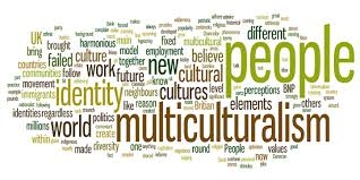Multiculturalism, a term that often echoes in political and social dialogues, encapsulates the coexistence of diverse cultural identities within a singular community. It manifests in various forms, uniquely interwoven into societal fabrics, resulting in rich tapestries of human experience. One might ponder: how might these diverse perspectives contribute to societal progress, and conversely, do they also pose potential challenges to national cohesion?
At its core, multiculturalism promotes the idea that different cultural identities should not only be tolerated but celebrated. This ethos encourages individuals and communities to engage with one another, fostering understanding and cooperation. It posits that diversity can enhance a community’s resilience, creativity, and adaptability. The amalgamation of varying cultural practices and beliefs can result in innovative ideas and solutions that would remain dormant within a monolithic cultural framework.
However, before we delve deeper into its advantages, it is essential to explore the inherent complexities that accompany multiculturalism. When cultures blend, there can be frictions and misunderstandings. The potential for cultural appropriation looms large, as dominant cultures may inadvertently subsume elements of minority cultures without due respect or acknowledgment. This dynamic raises a critical question: how can societies ensure that multiculturalism flourishes without marginalizing or undermining the cultural identities of its constituents?
History bears witness to the tumultuous paths that multicultural societies have traversed. In the United States, the cultural mosaic has been foundational in shaping the nation’s identity. The amalgamation of immigrant cultures has contributed to a dynamic society characterized by its philosophical pluralism and artistic diversity. Yet, the struggle for civil rights among minority groups reveals the persistent challenges that accompany multiculturalism. Striking a balance between cultural preservation and integration remains a formidable task.
In examining the benefits of multiculturalism, one must consider the intellectual and cultural enrichment that arises when diverse perspectives converge. The sharing of artistic expressions—from music and dance to literature and cuisine—enables communities to break free from the constraints of sameness. Festivals celebrating different heritages, such as Diwali, Chinese New Year, and Juneteenth, offer opportunities for collective joy, learning, and collaboration among diverse groups. These celebrations not only enhance social ties but also foster an environment of mutual respect and understanding.
Conversely, the challenges of multiculturalism can exacerbate social tensions, particularly when economic disparities align with cultural divisions. Communities may become polarized, leading to the alienation of various groups. The question arises: How can policymakers address the socio-economic inequalities that often underpin cultural tensions? By creating inclusive platforms that prioritize dialogue and negotiation, societies can work toward consensus-building. Educational initiatives, which promote cross-cultural understanding, are pivotal in laying a foundation for lasting societal harmony.
Another compelling aspect of multiculturalism involves the realm of governance. Inclusive policies that reflect the diversity of a population can enhance democratic practices. Representation matters—ensuring that decision-makers reflect the communities they serve can foster legitimacy and trust in governmental institutions. Yet, this also presents a dilemma: how can governments navigate the competing demands of different cultural groups while maintaining a unified national identity?
The interplay between multiculturalism and global challenges, such as climate change, provides additional layers of complexity. As the world grapples with environmental crises, diverse cultural perspectives can inspire innovative approaches to sustainability. Indigenous knowledge systems, often overlooked in mainstream discourse, offer invaluable insights into biodiversity conservation and ecological stewardship. For instance, traditional land management practices employed by Indigenous populations can serve as a model for contemporary environmental strategies.
Nevertheless, integrating such diverse viewpoints into effective climate action poses a significant challenge. There is the risk of cultural paternalism, whereby dominant cultures impose their interpretative frameworks without adequately considering the traditions and wisdom of marginalized communities. Therefore, a critical examination of how multiculturalism can enrich environmental sustainability must be undertaken, ensuring that every voice is heard and valued.
Moreover, there is a philosophical inquiry surrounding identity in multicultural contexts. The question of belonging becomes complex when individuals navigate multiple cultural identities. How do individuals reconcile their personal identities with the broader cultural narratives around them? The concept of hybrid identities emerges, where individuals embody elements from various cultural backgrounds. Fostering environments that embrace these hybrid identities is essential for nurturing a sense of belonging and community.
As we reflect on the future of multiculturalism, one must consider the implications of globalization. The rapid interchange of cultural influences facilitated by technology serves as both a boon and a bane. It can lead to greater appreciation and understanding across cultures; yet, it also risks homogenizing unique cultural identities. Finding a balance between global interconnectedness and local cultural preservation is imperative for a harmonious multicultural society.
In conclusion, multiculturalism embodies a dichotomy of opportunity and challenge. It holds the promise of a vibrant, innovative society enriched by diverse cultural narratives while also grappling with the complexities of social cohesion and identity. By fostering dialogue, addressing inequalities, and prioritizing inclusive policies, societies can blossom as tapestry woven with the threads of their cultural diversity. Ultimately, the challenge remains: How can we collectively harness the strength of multiculturalism to create a brighter, more sustainable future for all?
